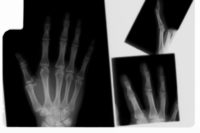Discussions about the U.S. opioid epidemic are frequent, but the impact of opioids on workers may be left out of the conversation. Certain occupations, such as emergency medical services, law enforcement, and environmental services, face a high risk of occupational exposure to opioids — including the extremely toxic fentanyl and carfentanil — when responding to overdoses.
But that is only part of the problem. Workers in high-injury occupations, such as construction, are often prescribed opioids as treatment for work-related injuries. The medication can quickly lead to opioid use disorders, addiction, or even death.
“This is a national public health emergency,” said Chip Hughes, program director for WTP, which funds organizations nationwide to provide occupational health and safety training to workers.
“Opioid usage disorder is a chronic, relapsing disorder,” said John Howard, M.D., J.D., director of NIOSH. “Lifetime treatment is necessary.”
Howard detailed the difference between the drugs and described how they work in the body.
- Opiates such as heroin, morphine, and codeine are naturally derived from the flowering opium poppy.
- Opioids, including fentanyl and carfentanil, are synthetic or partially synthetic.
Fentanyl is used to treat severe cancer pain or manage pain after surgery. It is 50 to 100 times more potent than morphine and even small amounts are lethal to humans. First responders are at risk for coming into contact with the drug and may not know when a given situation puts them at risk.
A recent report from the Massachusetts Department of Health documented 4,301 workers in the state who died from opioid overdoses between 2011 and 2015. Lead author, Letitia Davis, Sc.D., said that those working in the trades, including construction and mining, fishing and farming, and material moving — all physically demanding jobs — were at the highest risk for opioid-related deaths.
Not unsurprisingly, the report uncovered high overdose rates in occupations with high injury rates. Job insecurity and lack of paid sick leave also play a role. These workers use opioids to manage pain so that they are able to work, Davis explained, often times leading to opioid use disorder or overdose.
“We have to reconceptualize what drug use stigma means in the workplace,” she said. “It means you’re going to lose your job if you don’t come to work.”
“We are committed to developing a training portfolio that is much broader than what we have created in the past,” Hughes said. “As always, with our program, primary prevention is the priority.
Source: Environmental Factor Newsletter



